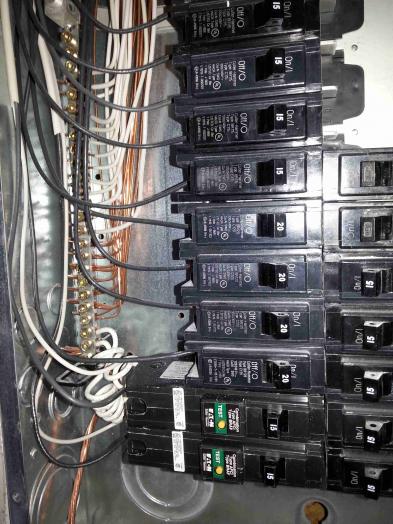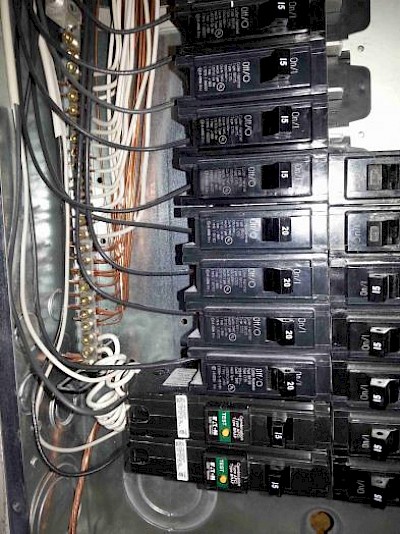Case Study of a Lower Mainland Home Inspection — Electrical
People often ask me why they have to attend a home inspection with me, instead of waiting for the report.
I’ve been an inspector for over 27 years now, all over the Lower Mainland — from all over Vancouver and as far east as Hope, and I’ve never had a client tell me after accompanying me on the inspection say, “this was a waste of my time”.
More often than not, they’ve learned many things they were unprepared for, and are relieved that they have answers and understand the importance of ongoing maintenance and proper repair.
Here’s a typical case study of a home inspection that I’ve completed with a client on site.
We’re going to cover many aspects of the home, using examples from many inspections I’ve done over the years, including solutions.
The house we’ll be inspecting over the next week or so, is a three bedroom two bathroom home built in 1969, in North Delta.
It’s springtime, and a clear day, when the clients, a young couple, Bruce and Heather, are buying their first single family home and they arrive. They’ve owned a townhouse in Surrey, and now have a family. Bruce is an accountant, and Heather is a stay at home mom. Five years ago, I inspected their first home — a townhouse with them, and they were pleased with that inspection. Now, we’re going to look at their new purchase.
__________________________
We’re now in the interior of the home.
What are we looking for?
We are inspecting the electrical components of the home. I do a random sampling of the outlets. The good news is that everything looked serviceable there.
Then I inspected the electrical panel. There were no AFCI’s or GFCI breakers present.
“Bruce, it looks like we can consider that installing a few Arc Fault Breakers (in the panel) for your bedrooms are a good idea. Arc-Fault breakers are the newest style of breaker to be developed and they work on a different principle than the other two styles of breakers (regular breaker and a GFCI) It continuously monitors the shape of the sine wave of the electricity passing through the AFCI breaker. If the sine wave is uneven or jagged, it can be an indication of a sparking condition somewhere down the line and the breaker will trip.
The AFCI uses a very simple computer chip that constantly checks for a sparking condition between checks for a sparking condition between the hot wire and the neutral wire. It also checks for a high resistance or overheating condition in either the outgoing hot wire or the returning neutral wire. Generally it checks for one sputtering, sparking or overheating condition that might indicate a loose or overheating connection.
There is a GFCI receptacle in the bathroom. Notice the “TEST” button. By pushing the TEST button, we are creating an artificial “short” by tripping the breaker. By resetting it, we know that it’s working correctly and is on guard duty again. GFCI circuit breakers and receptacles are designed to protect against ground faults of 6 mA or more.
Bottom line: These devices (fuses and circuit breakers) are your best friends when it comes to the electricity in your home. You know how you’ve been told not to overload an outlet, but yet you still have six surge protectors strung together with who knows how many things plugged into them?
Fuses and circuit breakers are the watchmen of the current. When you demand too much from an outlet, one or two things can happen.
1. You “trip” the breaker, or blow a fuse, or
2. That wire, which is only meant to carry 15 amps of current has now gotten so hot it has melted the plastic insulation jacket off and the wires are touching. That’s when a fire happens.
AFCI and GFCI manufacturers recommend testing monthly, and documentation of those tests. That’s why we include a graph in our binder (under the electrical index page) to keep handy to help you remember to run your tests.
To test whether they are working properly, you will push the test button first and then reset the breaker by taking the toggle switch to the off position and then to the on position and then this breaker is working. If it won’t reset there’s a problem. If the GFCI or the Arc Fault Breaker keeps tripping, then you want to call an electrician. He can replace the outlet or breaker for you and most importantly, solve why it was tripping.

Older homes like this one could always use a bit of a revamp to bring the wiring up to today’s safety standards. And while we are at it, adding AFCI’s to the bedroom circuits will make it safe for your children and family, as they now have computers, game systems and more in those rooms, and GFCI’s (to all areas that have moisture around them) such as your exteriors, the bathroom and kitchen areas — these are the ways to keep your home safe.

